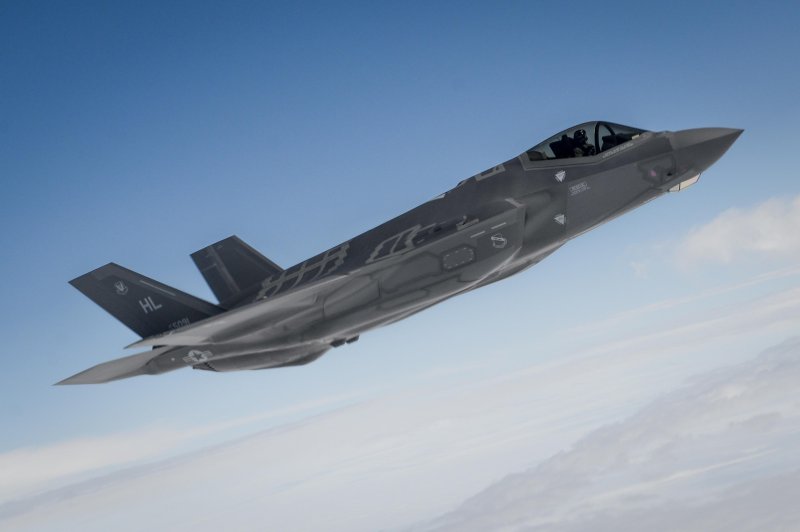Truax Field, Wisc. and Dannelly Field, Ala. were recently named preferred locations to receive the F-35A Lightning II. The 5th generation aircraft will replace current 4th generation platforms to meet combatant commander requirements. Photo by Staff Sgt. Kate Thornton/U.S. Air Force
Nov. 16 (UPI) -- The Department of Defense is awarding Lockheed Martin $349 million to provide infrastructure for laboratories and flight testing in support of the F-35 Lightning II Joint Strike Fighter.
The contract will run through March 2020 under fiscal 2018 research, development, test and evaluation funding from the three participating services and non-Defense Department participants, according to a government announcement
In a second award, Lockheed Martin is receiving $83.1 million from the Air Force for development and
testing of equipment for F-35A nuclear capability. It's known as making a aircraft "dual-capable," being able to deliver both conventional and nuclear weapons.
The development and requisite testing and certification for nuclear capability in the F-35A is expected to last until February 2024. A total of $24.6 million in Air Force fiscal 2019 research and development funds were obligated upon issue of the contract.
The Air Force plans to mount the B-61-12 nuclear gravity bomb on the F-35, thus integrating it into the air-delivered leg of the "nuclear triad" which also includes sea and land-based missiles.
The B-16-12 is the newest upgrade of the B-61 bomb, a standard weapon in the U.S. nuclear arsenal since the 1960s and currently the only nuclear gravity bomb deployed by the Air Force, though it retains a stockpile of older, larger nuclear weapons in reserve.
The B-61-12 has enhanced GPS guidance and tailfins to improve its delivery accuracy. It has a "dial-a-yield" warhead that lets its users set it for tactical strikes as low as 0.3 kilotons for battlefield use or strategic-level yields at as high as 350 kilotons, making its destructive power highly flexible depending on the mission.
The U.S. currently has a sharing agreement with NATO on nuclear weapons, including the B-61, on member nations territory. NATO members purchasing the F-35 would likely share in the nuclear capability so U.S. weapons could be carried by allied planes, though many domestic European fighter craft already have this capability due to the agreement.















